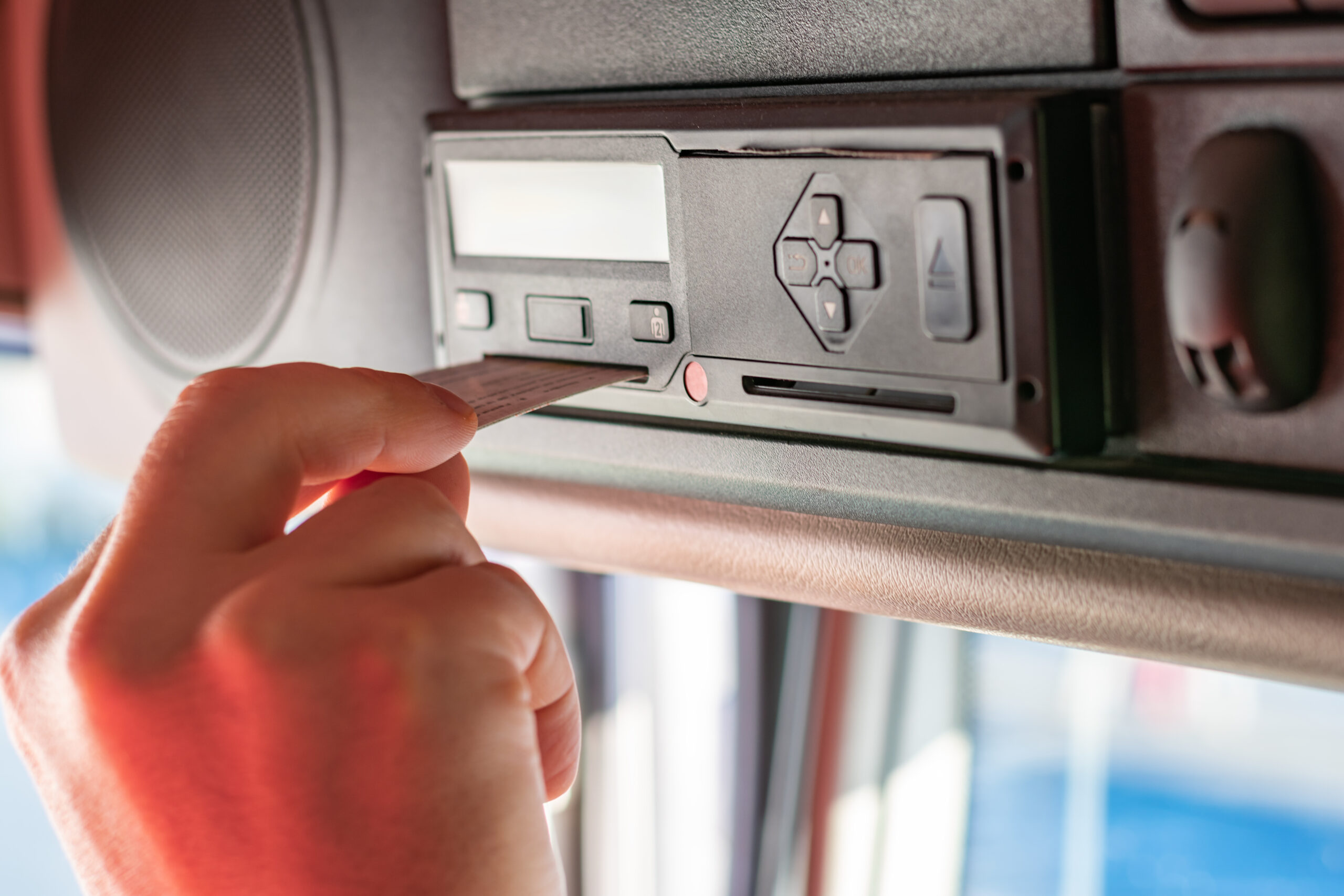
Tachographs are fitted to some six million trucks and buses throughout the EU. They are designed to allow a driver’s activity to be monitored to create a harmonisation of working conditions throughout Europe, prevent fatigue, protect public safety and ensure fair competition and conformity with the law. The European Commission estimates that tachograph compliance costs the transport industry €2.7 billion. Whilst we have had, the digital tachograph for many years now, June 2016 saw the next stage in its development including new data being recorded, the approach to enforcement and integration with other systems. EU Regulations, in March 2016, laid the pathway for the introduction of the next generation “smart tachographs”. These new devices aim to reduce the administrative burden on the transport industries (covering both goods and passenger vehicles) and to eliminate the most serious forms of tampering or offence. Vehicles registered for the first time on or after 15 June 2019 had to be fitted with the new smart tachographs.
These new digital tachographs incorporate a number of changes taking advantage of advances in technology and implementing many systems that some operators believe should have been present right from the first generation models.
Global Navigation Satellite System (GNSS)
GNSS, allows the vehicle unit to record the vehicle position in real time. This also allows the driver card to record the vehicle position and the date and time. The only times that the position of the vehicle is recorded, is at the Start and End of the drivers duty and after three hours of driving time.
Dedicated Short Range Communication (DSRC)
A smart tachograph can communicate with roadside enforcement officers using the DSRC. The DSRC would therefore be able to communicate with vehicles with smart tachographs installed at a roadside check or whilst the officers are in motion, travelling close by the vehicle being targeted.
Any data taken from the smart tachograph should be deleted within a three-hour window if no issues are detected. However, it should be the case that automated fines cannot be processed.
Information that can be taken during the DSRC should be limited to:
Intelligent Transport Systems (ITS) interface
The ITS, allows data to be shared with the operator as well as the enforcement authorities. This potentially also mean interaction with ancillary devices that could use the tachograph data to undertake ‘live’ analysis of the tachograph to determine things such as how much driving time a driver has left.
However, the driver will have to give permission for this data to be used in this manner. To give permission, do this, the driver would have to select the menu on the smart tachograph, whereupon he/she will be asked:
The pictograms for this new technology are:

There are two types of card for the company and the driver. These are either GEN1 or GEN2, which confirms whether a first or second-generation card.
Existing cards will work in a smart tachograph, but will not record data specific to a smart tachograph. As the older cards expire, or are lost or stolen, the GEN2 cards will be issued to replace them. You will know if you have a GEN2 card as in the bottom right hand corner of the card, it will be marked G2.
Types of Smart Cards
There are four types of smart cards as follows:
Driver Card – white in colour and can be obtained from the DVLA if a resident in GB. If resident in Northern Ireland, driver cards are issued by DVA.
Company Card – Yellow in colour and used solely to login and logout data from the tachograph unit (VU) and to download data from it.
Workshop Card – Red in colour and used at calibration centres.
Control Card – Blue in colour and used by the enforcement authorities.
A recent email update (2nd August) from DVSA concerning smart tachograph technology was circulated to all operators who have signed up to DVSA email updates. It is replicated below.
Detecting tachograph violations is getting easier
“We are trialling remote tachograph sensing equipment in Britain, to make it easier to detect drivers and operators who are breaking driver hour’s rules.
While we know most operators follow driver hour’s rules, we are still finding offences at the roadside. Breaking driver hour’s rules has the potential to be dangerous to road users.
We are exploring this technology to help keep Britain’s roads safe. It will mean we can identify many kinds of tachograph violations when travelling alongside vehicles, or from the roadside.
If you are a driver, make sure you:
If you are a HGV, PSV or LGV operator who has to follow driver hour’s rules, make sure you:
If you commit a tachograph violation, it is now easier for us to find you!“
Source – DVSA